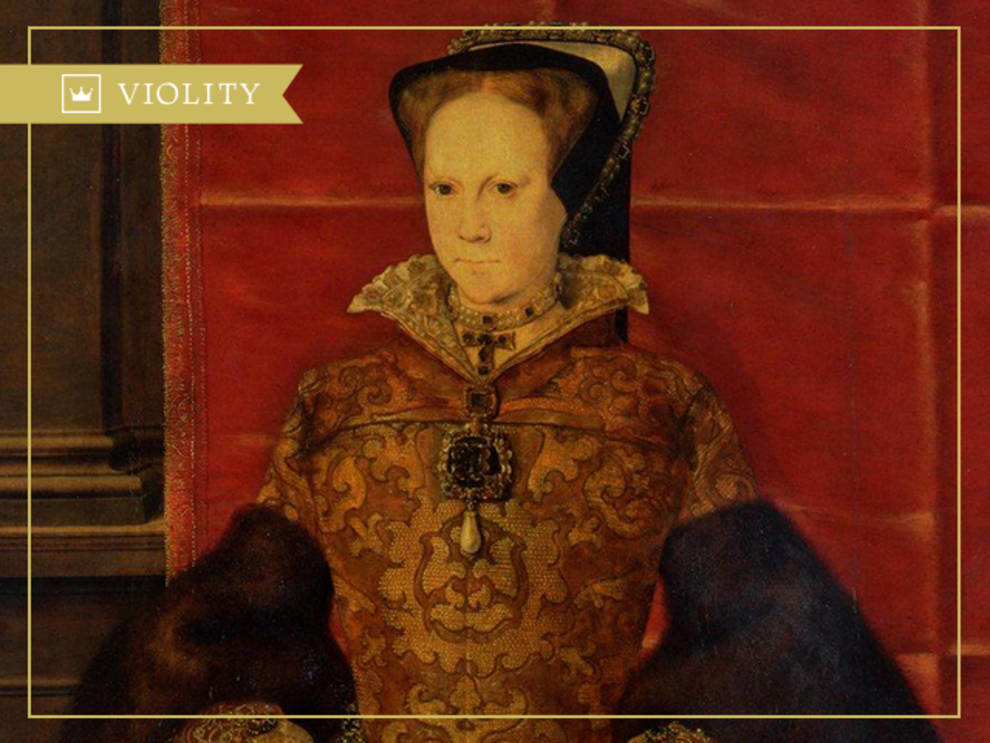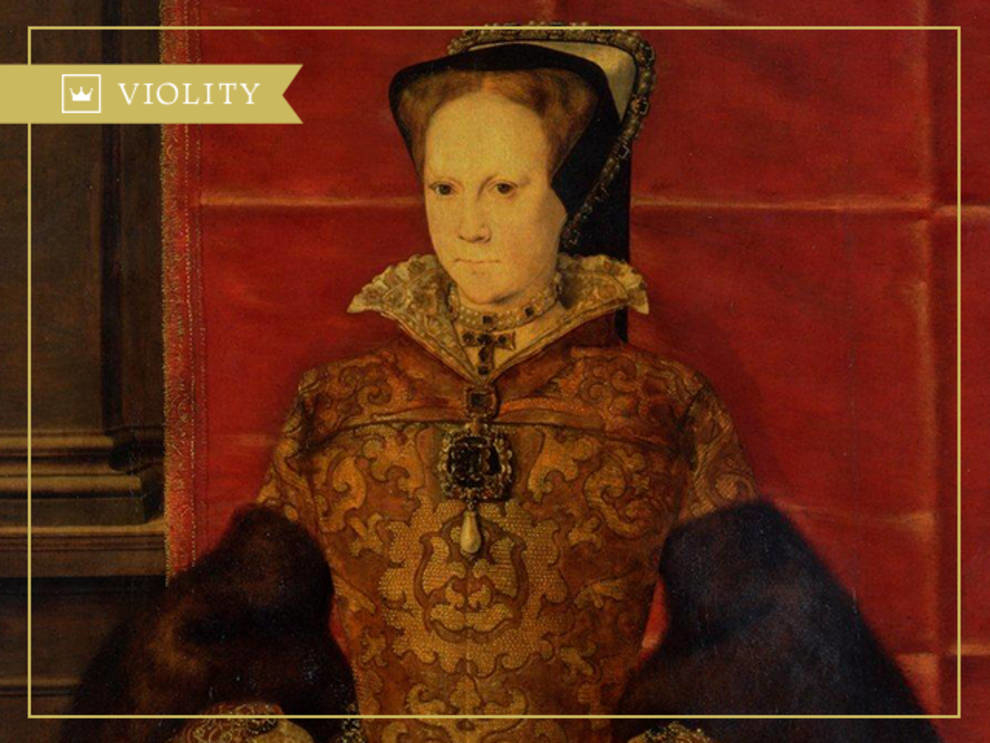
Beginning of the reign of Mary the Bloody
July 19, 1553. The Privy Council robbed the crown of Jane Gray, the great-granddaughter of the founder of the Tudor dynasty, Henry VII. He proclaimed Mary Tudor queen. The next day, Dudley submitted to the will of the council and announced his surrender. Soon, he, like another 150 high-ranking officials, including Jane Gray, was arrested and placed in the Tower.
On 3 August, Maria, led by 10,000 troops, arrived in London, where she was met by sister Elizabeth and 800 nobles. All this time, Edward remained unburied due to the desire of Mary to hold the ceremony according to the Catholic rite. However, the advisers convinced her to abandon this intention, and on August 9 in Westminster Abbey, he was buried according to Protestant traditions. Here, on October 1, Maria I, the first ruling queen in the history of England, was also crowned.

During the first six months of her reign, she executed Jane Gray, relatives of her father-in-law John Dudley and himself. A year later, after marrying the heir to the Spanish throne, Philip Habsburg, Maria Tudor began persecuting all those who helped her father to carry out the reformation in England — about 300 bishops of the Anglican church, including Archbishop of Kentenberia Thomas Cranmer, were burned. Mary’s intention to completely destroy Protestantism and return the monastic lands to the Catholic Church led to an uprising, during which Elizabeth was arrested.
Marriage of Mary with Philip of Spain was unsuccessful - they did not have children, due to the Franco-Spanish war, England lost Calais, her last possession in continental Europe. Despite the fact that they were both descendants of John Gaunt, the first duke of Lancaster, Mary appointed her sister Elizabeth to succeed him on the English throne.
In the same year in Geneva, the Scottish religious reformer John Knox published his pamphlet “Trubniy glas against the terrible rule of women”, in which he attacked, in particular, the reign of Mary Tudor, which he called bloody for the cruel persecution of Protestants. This nickname became especially widespread in the 17th century, when “Bloody Mary” gained a reputation as a bloodthirsty tyrant, and its achievements in reforming the state laid the foundations for the success of the Elizabethan era, were diminished or forgotten.
On 3 August, Maria, led by 10,000 troops, arrived in London, where she was met by sister Elizabeth and 800 nobles. All this time, Edward remained unburied due to the desire of Mary to hold the ceremony according to the Catholic rite. However, the advisers convinced her to abandon this intention, and on August 9 in Westminster Abbey, he was buried according to Protestant traditions. Here, on October 1, Maria I, the first ruling queen in the history of England, was also crowned.

Photo © jnsm.com.ua
During the first six months of her reign, she executed Jane Gray, relatives of her father-in-law John Dudley and himself. A year later, after marrying the heir to the Spanish throne, Philip Habsburg, Maria Tudor began persecuting all those who helped her father to carry out the reformation in England — about 300 bishops of the Anglican church, including Archbishop of Kentenberia Thomas Cranmer, were burned. Mary’s intention to completely destroy Protestantism and return the monastic lands to the Catholic Church led to an uprising, during which Elizabeth was arrested.
Marriage of Mary with Philip of Spain was unsuccessful - they did not have children, due to the Franco-Spanish war, England lost Calais, her last possession in continental Europe. Despite the fact that they were both descendants of John Gaunt, the first duke of Lancaster, Mary appointed her sister Elizabeth to succeed him on the English throne.
In the same year in Geneva, the Scottish religious reformer John Knox published his pamphlet “Trubniy glas against the terrible rule of women”, in which he attacked, in particular, the reign of Mary Tudor, which he called bloody for the cruel persecution of Protestants. This nickname became especially widespread in the 17th century, when “Bloody Mary” gained a reputation as a bloodthirsty tyrant, and its achievements in reforming the state laid the foundations for the success of the Elizabethan era, were diminished or forgotten.


